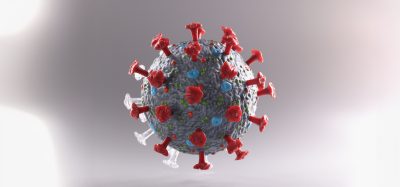Blocking a microRNA may prevent age-related conditions
Posted: 2 May 2023 | Izzy Wood (Drug Target Review) | No comments yet
Conditions like chronic inflammation, muscle loss and bone loss have an elevated microRNA, US researchers attempted to block this in aged mice.


A study from the Medical College of Georgia at Augusta University, US, has used an inhibitor that is specifically designed to block microRNA-141-3p in aged mice. These types of engineered molecules are called antagomirs, and while currently restricted to research, could one day have therapeutic value for patients.
MicroRNAs help regulate gene expression and consequently the function of our cells, and several, including one called microRNA-141-3p, have been implicated in the ills of aging, like increasing levels of potentially damaging chronic inflammation and that shrinking muscle mass.
“When we age in all these complications like chronic inflammation, muscle loss, bone loss, this microRNA is elevated,” said Dr Sadanand Fulzele, aging researcher in the Department of Medicine at the Medical College of Georgia at Augusta University. “We wanted to suppress it.”
In what appears to be the first study of its kind, published in Aging and Disease, mice who would equate to humans in their 60s, were treated for three months with twice-weekly subcutaneous injections of the antagomir, a regimen that could be easily adapted for humans.
The scientists then looked at changes that occurred in the blood, the spleen whose tasks include regulating levels of infection-fighting white blood cells, as well as the bone and muscle. They found a more youthful profile everywhere they looked.
In the spleen, for example, they saw more inflammation-reducing immune cells called macrophages (M2) rather than their inflammation-promoting counterpart (M1). M2s also have been reported to support tissue repair. The blood had lower levels of inflammation-promoting proteins called cytokines, and the microstructure of the bone was more solid and muscle fibre size was bigger.
They found that microRNA-141-3p regulates expression of AUF1, a “good” gene whose many jobs include regulating the stability of messenger RNA, which plays a role in the proteins DNA ultimately makes. AUF1 helps protect younger people from making so many proinflammatory products like IL-6 which contribute to chronic, damaging inflammation. It does the same for cell senescence when cells become less able to function normally and divide but typically don’t die. Higher levels of microRNA-141-3p mean less of the protective AUF1 and blocking the microRNA enabled higher levels and consequently less inflammation and senescence.
Levels of inflammation and oxidative stress are an indicator of overall health at any age. Chronic inflammation and chronic oxidative stress are hallmarks of an aging body and important players in the negative changes that can result.
With age, the repair/replacement capacity of cells is known to decrease so that, for example, bone loss begins to outpace new bone formation. Meanwhile inflammation, essential to healing but destructive at chronic, high levels, creeps upward. Resulting problems can range from increasing physical frailty to an increased incidence of diseases like cancer, cardiovascular disease and dementia.
Fulzele notes that his research is geared toward finding ways to prevent damage, rather than trying to restore a healthy normal. Some of his next steps include looking at how blocking the microRNA impacts other age-related concerns like cognition and giving the microRNA-141-3p-specific antagomir for a longer timeframe. He noted they did not identify any overt side effects over the three months of the study.
Related topics
Animal Models, DNA, Genetic Analysis, Genomics, Immunology, microRNA
Related conditions
bone loss, chronic inflammation, muscle loss
Related organisations
Medical College of Georgia at Augusta University
Related people
Dr Sadanand Fulzele








